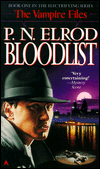 |
| Image courtesy of www.booksamillion.com |
Lewis Carroll
1865/1872
The Summary
Lewis Carroll's dynamic duo of short novels, Alice's Adventures in Wonderland and Through the Looking Glass, follow the adventures of one imaginative and precocious young girl. Alice, a young girl seeking to satisfy her curiosity, finds herself stepping into a brand new world after falling down a rabbit hole - and, later, after climbing through a mirrored portal.
The Good
Both Carroll's novels are imaginative and entertaining to read. They're short, simple, and sweet, being sprinkled with ample amounts of adventure and spiced with the occasional dream-like contradictions of one young girl's imagination.
The Bad
At heart, it's honestly a child's bed-time story with wild adventures and strangely irreverent logic - and lots of talking animals and chess pieces. While amusing and enjoyable, at times, it's less appealing as a classic piece of literature and more appropriate for a younger audience.
And, honestly, it even gets a bit dull, despite these ongoing adventures. Alice isn't exactly the most fascinating narrator; in fact, she seems almost comically adult-ish in her short monologues as she reviews the illogical nature of her situation.
Not to mention Alice's Adventures in Wonderland and Through the Looking Glass are very similar in their nature: Different passage, same insanity.
The Ugly
Admittedly, most books are far better than their movie counterparts. But, in the case of Carroll's dual works, I might recommend watching a snippet or two of Disney's 1951 animated version of Alice in Wonderland. Although I wouldn't call them identical, the movie possesses enough detail from the original books to provide an adequate grasp on Carroll's entire work.


